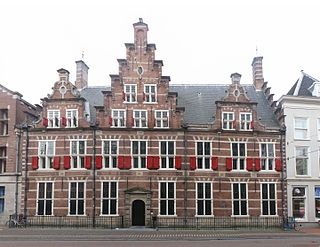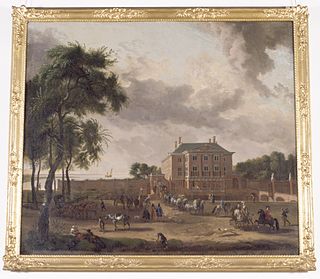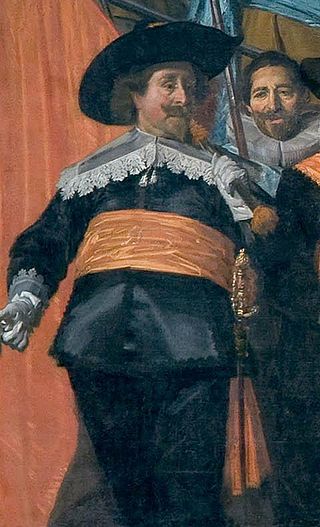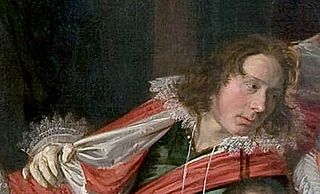

The Officers of the St George Militia Company in 1639 refers to the last and largest schuttersstuk painted by Frans Hals for the St. George (or St. Joris) civic guard of Haarlem, and today is considered one of the main attractions of the Frans Hals Museum in Haarlem.
Contents
In this painting over 4 meters wide, nineteen men are portrayed, each wearing a sash in the colour of his rot, or brigade. All three brigades of the St George militia are represented, with their flag-bearers carrying flags in the colours orange, white or blue. These officers were selected by the council of Haarlem to serve for three years, and this group had just finished their tenure and celebrated their end of service with a portrait. The man with the commander's staff situated third from lower left with the orange sash and orange feather in his hat is the Colonel Johan Claesz Loo, who heads the militia. The other officers are carrying partisans with tassles (captains), spontoons (lieutenants) or halberds (sergeants).
The men featured in the foreground are from left to right Ensign Lambert Woutersz (with orange flag), Sergeant Gabriel Loreyn, Colonel Johan Claesz Loo, Lieutenant Francois Woutersz, Captain Michiel de Wael, Lieutenant Cornelis Coning, Captain Florens van der Hoeff, Captain Nicolaes Grisz Grauwert, Sergeant Lucas van Tetterode, Captain Quirijn Jansz Damast, Ensign Dirck Dicx (with blue flag), and Ensign Pieter Schout (with white flag).
The men in the background are from upper left, Sergeant Pieter de Jong, Frans Hals (self-portrait), Ensign Jacob Druyvesteyn, Lieutenant Hendrik Gerritsz Pot, Sergeant Nicolaes van Loo, Sergeant Abraham Cornelisz van der Schalcken, and Lieutenant Hendrick Coning.
Though a member of the militia, Frans Hals was never assigned the rank of an officer, though he was clearly admired as an important local artist, as was his fellow portraitist Pot, also portrayed in the rear lineup (and who features in two schutterstukken for the other militia in town - the St Adriansdoelen, or Cluveniers). Historians have speculated whether the self-portrait is indeed Hals, or another absent officer (none of the schutterstukken Hals painted were complete representations of all officers; the men paid for their portraits and some men "skipped" a painting). By the time Hals painted this painting, he had been a soldier of the guard for 25 years, and it had been 23 years since he completed his first schutterstuk for this militia, a highly unusual length of time between commissions for any artist of his time.



















